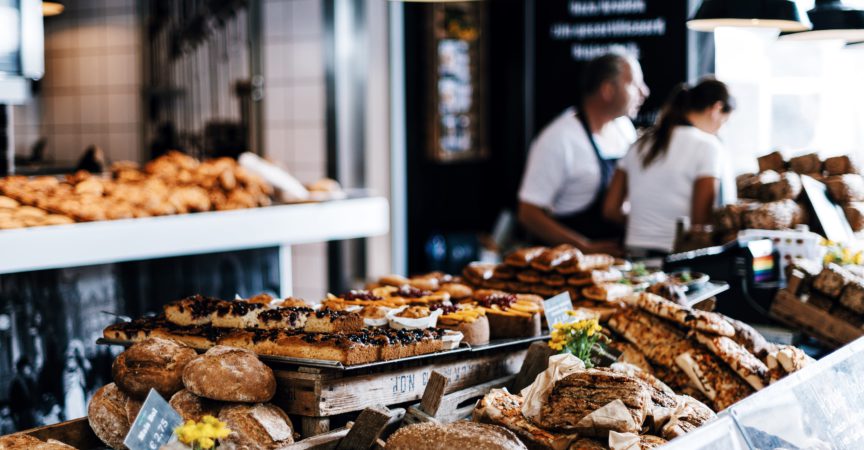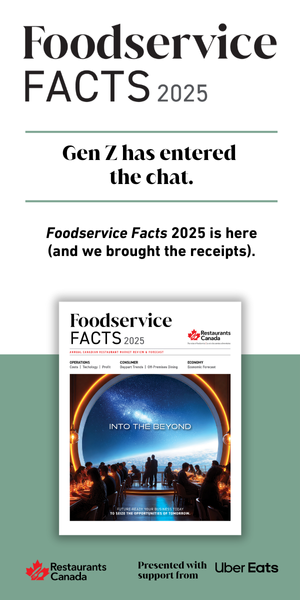The Convenience Food Battle is Alive and Well
The Convenience Food battle is alive and well
By Sylvain Charlebois
“Given that convenience seems to have more currency than ever before, two worlds are currently colliding in the ready-to-eat space at grocery stores.”
Food trends are difficult to follow these days. Just like hip sectors like tech, the food industry is coming up with its own peculiar lingo when describing market shifts. One of the latest examples is “grocerant,” a word combining “grocer” and “restaurant.” The term has been around for a few years, but it seems to have gone mainstream in recent months. Or at least it’s a term most of us will be hearing more often.
But as trendy as it is, the term “grocerant” is also in fact quite relevant and accurately captures what is happening in the food industry these days. In short, a grocerant is a grocery store that sells prepared meals, to either eat on site or take home. The numbers are staggering. According to NPD Group, a research outfit in the [U.S. and Canada], grocerants generated 2.4 billion new visits and over US$10 billion in sales in 2016—a massive shift.
Efforts to offer more convenience are resulting in numbers not seen since the drive-through phenomenon several decades ago. In Canada, while the numbers are a little more obscure, we are seeing similar trends. Many retailers are on the move. Given that convenience seems to have more currency than ever before, two worlds are currently colliding in the ready-to-eat space at grocery stores, which caters to people seeking portable solutions to accommodate their hectic daily lives.
Grocerants offer a one-stop-shopping solution for consumers driven by either curiosity or a lack of time. An increasing number of grocery stores now allow customers to buy and eat on the spot. Some stores in Canada and the U.S., including several independents such as Longo’s and even larger outfits like Loblaw, Sobeys and Metro, deftly merge both food retailing and foodservice under one roof.
GROCERY STORES CHALLENGING RESTAURANTS
Research suggests many consumers generally perceive grab-and-go food products to be healthier than meals you can get at a restaurant. This works well for grocers. Price wars constitute the other driving issue for grocers. Over the last 15 months in Canada, food retail prices have barely moved. But the price of food purchased at restaurants has increased significantly, more than double the general inflation rate.
This would suggest that menu prices are much more immune to market cycles than retail food prices. Demand in foodservice is inherently more inelastic, so margins can be kept up and defended in most cases, no matter what the economy is doing. But restaurants aren’t staying quiet in the face of this new trend. Restaurant operators are fighting back by using technology to their advantage. Many are responding by using UberEats and other food delivery services, even expanding their market by offering meal kits and developing new ways to reach consumers. In other words, they are trying to go where the money is instead of just waiting for the consumers to come to them. Some say it’s all about millennials. It is indeed about offering fresh, healthy, reasonably priced products for the largest generation that is slowly taking over the economy.
AGING BABY BOOMERS HAVE AN IMPACT TOO
But the changes are more deep-rooted, beyond just millennials. Millennials certainly have the economic influence to trigger the changes we’re seeing, but many demographics are behaving differently around food. Families with older children like the enhanced grocerant experience, while aging baby boomers need the convenience. The appeal is across the board. Millennials were the first generation not willing to settle for what was being offered to them by grocery stores. The rise of the grocerant represents the awakening of an industry that’s been complacent for quite some time. In the realm of the convenience factor that’s a critical part of the grocerant movement, the ready-to-cook market is also emerging as an interesting opportunity, but not without some headaches.
In the U.S., Blue Apron, the largest and best-known meal-kit provider in the world, is waging an uphill battle. The company has just laid off six per cent of its staff and its stock has gone nowhere since going public in June. On the other hand, we’re seeing evidence that grocers like what they see from meal-kit outlets. Plated, the five-year-old American meal-kit company, was acquired by the grocery giant Albertsons, for approximately US$200 million.
Grocers do have the capacity to cover a broader market with their product offerings, but have not yet made much of a play on meal delivery and quality. Grocery chains, in fact, are often not hardwired to successfully meet new challenges. But that’s slowly changing. Metro made a significant move this year by acquiring MissFresh, and many expect other grocers to follow suit.
In processing as well, Campbell’s Soup, Unilever and many others are investing in meal kits to explore what could become a US$10 billion industry by the end of next year.
It’s all a growth opportunity that cannot be overlooked by grocers. They’ll need to hire the right people, with the right mindset, in order to capitalize on these new opportunities. And because of changing consumer expectations and behaviours, survival seems unlikely for stand-alone meal-kit outlets.
So, the convenience food battle is alive and well. Grocers were losing for a while, but the emergence of grocerants across the country is a sign that the industry is listening to what the modern consumer is telling them.
This article was originally published on The Conversation, theconversation.com
Be sure to hear experts on the GROCERY PANEL—Longo’s, Farm Boy and Pusateri’s—at rcshow.com. Also listen to Chef Mark McEwan on taking your operations from restaurant to retail.
You May Also Like
-

THE SECRET INGREDIENTS
November 19, 2025 -

Tech Equity
November 18, 2025 -

Fastest-Growing Pizza Sauces at Canadian Pizza Locations
November 14, 2025









